Two plus two equals five
Foods that are greater than the sum of their parts, a recipe that is greater than the sum of its parts, how many times can I say greater than the sum of its parts, and some other nice things
Welcome back to Half Empty.
Two plus two equals five
One Sunday in the not-too-distant past, I found myself standing at much-hyped Hollywood farmers’ market mainstay Weiser Family Farms when someone to my right began bursting with praise for some onions on sale.
"They are so sweet you can eat them like an apple, I swear to god,” he effused. How could I resist? I picked out some of the flat-ish orbs—Bermuda onions as it turns out—and took them home along with some purpley-skinned potatoes.
Tortilla española has five ingredients—eggs, potatoes, onions, olive oil, and salt—that come together to form one transcendent whole. It is, by my (loose) definition, a food that is truly greater than the sum of its parts. I’ve used these words for many years in describing foods that transcend their simplicity to bring about the sublime. For example, while on Spanish cuisine, pan con tomate (pa amb tomàquet, maybe more accurately) most definitely qualifies. Bread, olive oil, tomato, maybe some garlic, and that thing will go bananas in tu boca.

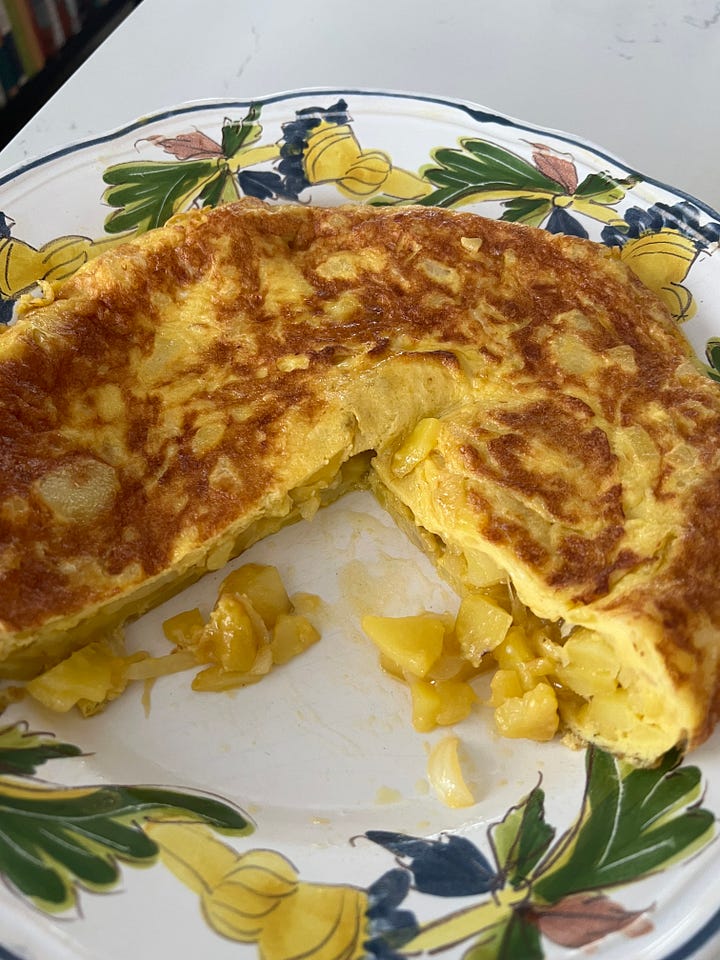
In Aristotle’s Metaphysics, while contemplating “unity,” he wrote of things “that have several parts and where the totality of them is not like a heap, but the whole is something beyond the parts.” It’s a tenet of philosophical ideas such as holism or emergence. Emergence occurs when something has properties that its basic parts do not have on their own, and “emerge” when they interact as a whole. Lots of things exhibit emergence: the ocean, our bodies, ecosystems, and much more. I believe certain foods also exhibit these properties. Potatoes are good on their own, sure, and so are sweet, apple-like onions. But together, cooked gently in olive oil and then bound by egg, they exude a set of characteristics that go beyond the properties of each individual component. With tortilla, it’s soft and silky, with a flavor that is not potato, onion, or egg, but something altogether different.
Here are a few examples of foods that, in my mind, fit the bill:
Pasta alla carbonara/amatriciana/gricia
Cacio e pepe/American mac and cheese
Pasta al pomodoro
Street tacos (meat, onion, cilantro, salsa)
Quesadillas
Cuban avocado salad
Tomato and cheese sandwiches
BLT sandwiches
Peanut butter and jelly sandwiches
Melon/fig and prosciutto
Mango/melon, chili, and lime
But aren’t all delicious foods, in some way, greater than the sum of their parts? Huh… that feels true. Maybe it’d be clarifying to think about a dish that doesn’t qualify for this squirrely category. Since we’ve honed in on eggs, what about your classic diner-style veggie omelette? Eggs, mushrooms, maybe spinach, cheese, bell peppers, etc. That, at least most of the time I’ve had it, does not meld together into a cohesive whole. Particularly bad veggie omelettes do leave me feeling like I would’ve been better off eating a pile of veggies sans eggs.
So maybe this is all about foods that are unexpectedly sublime. For example, one might expect a heavily-spiced Indian curry to be pretty great due to its long ingredient list. The sum of 20 ingredients is expectedly high, but the sum of 4 feels like it shouldn’t be. So when pasta alla carbonara, with nothing but cheese, cured pork, eggs, pasta, and a dash of starchy water, comes together to create a complex, saucy masterpiece, it often feels revelatory; even though each ingredient could be delicious on its own, together they create an entirely new whole. Technique plays a huge part here. How you cook the thing can be the difference between scrambled egg pasta and silky carbonara. In the equation, I imagine technique as the addition sign. It’s not the integer, but the operation.
One last, key thing on dishes that are greater than the sum of their parts: generally, the individual parts need to be pretty damn good on their own. As in, their quality must be high. If you’re making tomato toast, and the tomato (or the toast) is subpar, the entirety of the dish will be subpar. It’s the unfortunate truth about these simple dishes. The best tomato toast you can have will be the one you eat during summertime, when tomatoes are in season and at their prime flavorosity. Go to the farmers market, or whatever market, look around, and get the best stuff you can find to craft something special. These dishes, after all, should be accessible. Many of them are rooted in the cooking of the poor. People of little means devising ways of turning humble, inexpensive ingredients into profoundly delicious meals–making something out of nothing, really–is a reminder that you don’t need a lot to tap into that big ol’ well one might call the divine.
Not a recipe, just an idea
Pasta alla Nerano
In keeping with our theme of dishes that are greater than the sum of their parts, let’s look to zucchini-laden spaghetti alla Nerano, made famous by Stanley Tucci (I have no shame in saying I was influenced by a real one Mr. Signor Tucc). A bellissimo combination of spaghetti, fried zucchini, cheese, and pasta water that I’ve put on repeat for the last few weeks. Mammmmmmmmma miaaaaaaaaaaa. So semplice. So fantastic.
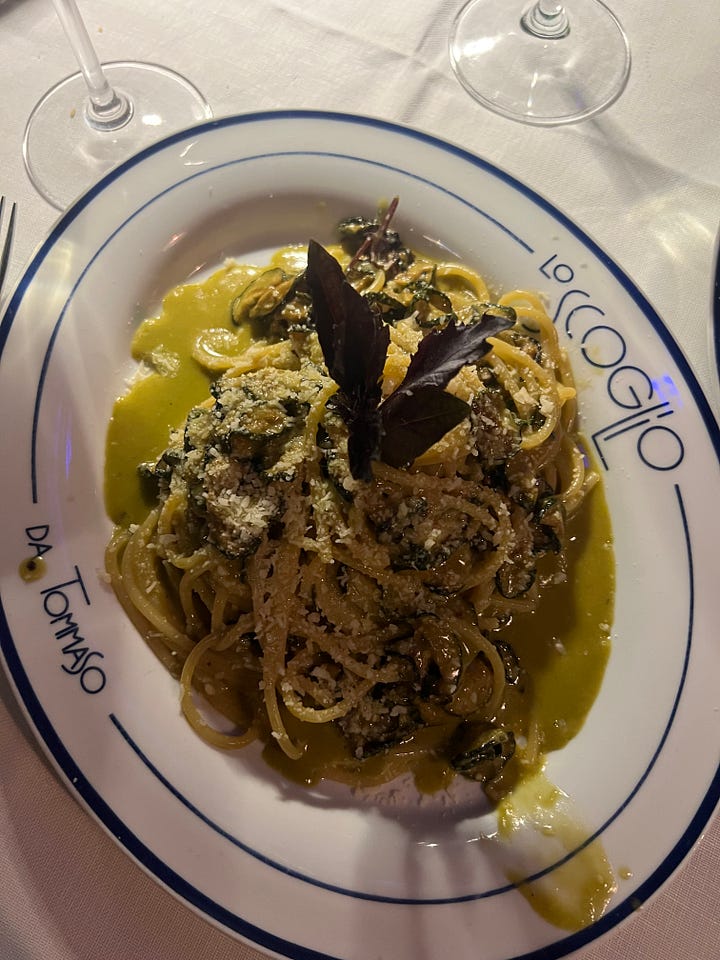

How do you make spaghetti alla Nerano? Well, as you can imagine for an as-seen-on-TV plate of food, recipes abound. Here and here are my favorites, along with using the original episode itself as a reference. But with so many recipes out there, I thought why not enter my own into the ring here for your viewing ease and cooking pleasure, during this week’s edition of not a recipe, just an idea.
So what you’ll need is: 6-8 medium zucchini, a lot of olive oil, grated cheese (parm works, but some more tradizionale recipes call for provolone del Monaco, a semi-hard cheese that would give the dish more of a juicy ooze, I think), spaghetti, a hit of butter, and some basil for garnish. As noted above, with a recipe that contains so few ingredients, unfortunately, those ingredients have to be good. Zucchini ideally from the farmers market, your garden, or some other high-quality source, imported capital-P Parmigiano, evoo, and nice bronze die-cut spaghetti all make a big difference. Will your pasta be ruined if you go to signor TJ’s and buy the somewhat depressing but very affordable shrink-wrapped zucchini? No, but it’s no secret we don’t stan TJ’s here at Half Empty. And, again, accessibility is an important part of the nature of this humble dish.
Fill a heavy pot about a third of the way up with olive oil. I know. It’s a lot. But I find that it really does make a difference to fry in olive oil. You can cut the oil with sunflower or grapeseed oil, but including at least a third of olive oil will introduce many flavorsome qualities. And yes, frying in olive oil is a good thing to do, but the cost can be prohibitive. Cut the zucchini into rounds that are thicker than you think they ought to be. A quarter inch or so. You want them thick enough so that when you fry them, they don’t turn into crispy wafers. Fry the zucchini in batches until golden brown but not crunchy. Season the zucchini with salt as they come out of the fry. At this point some people let the zucchini rest for a few hours; I don’t.
Next, get your water boiling, add a little salt, and throw the pasta in. Meanwhile, you’ll sautée a hint of garlic in some fresh olive oil in a pot or pan good for tossing a bunch o’ spaghetti. When the garlic becomes fragrant, throw in two-thirds of your fried zucchini slices. Then, believe it or not, start mashing those bad boys with a wooden spoon. Mash em’ up into basically a paste along with the garlic. Shut the heat off on the mash until the pasta is just about ready (al dente or whatever), and once it is, scoop it out of the water and directly into the squash over soft heat. Ladle in a ladleful of pasta water into the mix, along with the remaining unmashed zucchini slices, and get to tossing and/or stirring. If the pasta needs a second longer to get to the perfect doneness, add pasta water and cook while agitating constantly until the spaghetti has reached a good texture. The tossing should bring the sauce together, rendering it glossy and nice. Not wet enough to your liking? Add more pasta water. Once the pasta is nicely toothsome, turn the heat off and add the cheese and butter. If the sauce hadn’t really come together by this point, the dairy will help to make it more cohesive. Toss toss toss, and serve immediately with a basil leaf or ten.
The thing with this pasta is that you can really make it your own in so many different ways. Have some eggplant on hand? Throw that into the fry, why not. Have some colatura or fish sauce? Add in a dash or two after you’ve mashed up the vegetables. Even some sausage would be good in there if you’re feeling meaty. While, yes, the simplicity of this dish, of all the dishes we’ve discussed today, is beautiful, adding, subtracting, and adjusting should always be part of the process.
Other nice things
Freaky little passionfruit pearl pie that was very good. From Superiority Burger popping-up in LA.
One of the finest pancakes I’ve had in a long good while at Café Telegrama.
Despite my skepticism of all manner of “fusion,” first time at Indian-Italian Pijja Palace was spot-on.
Thank you for reading. All posts are free.

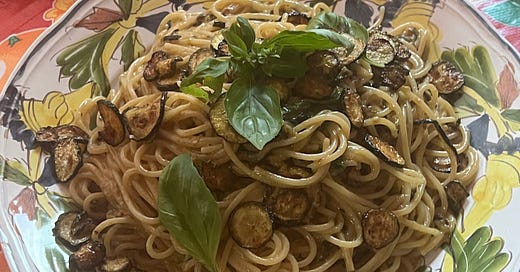



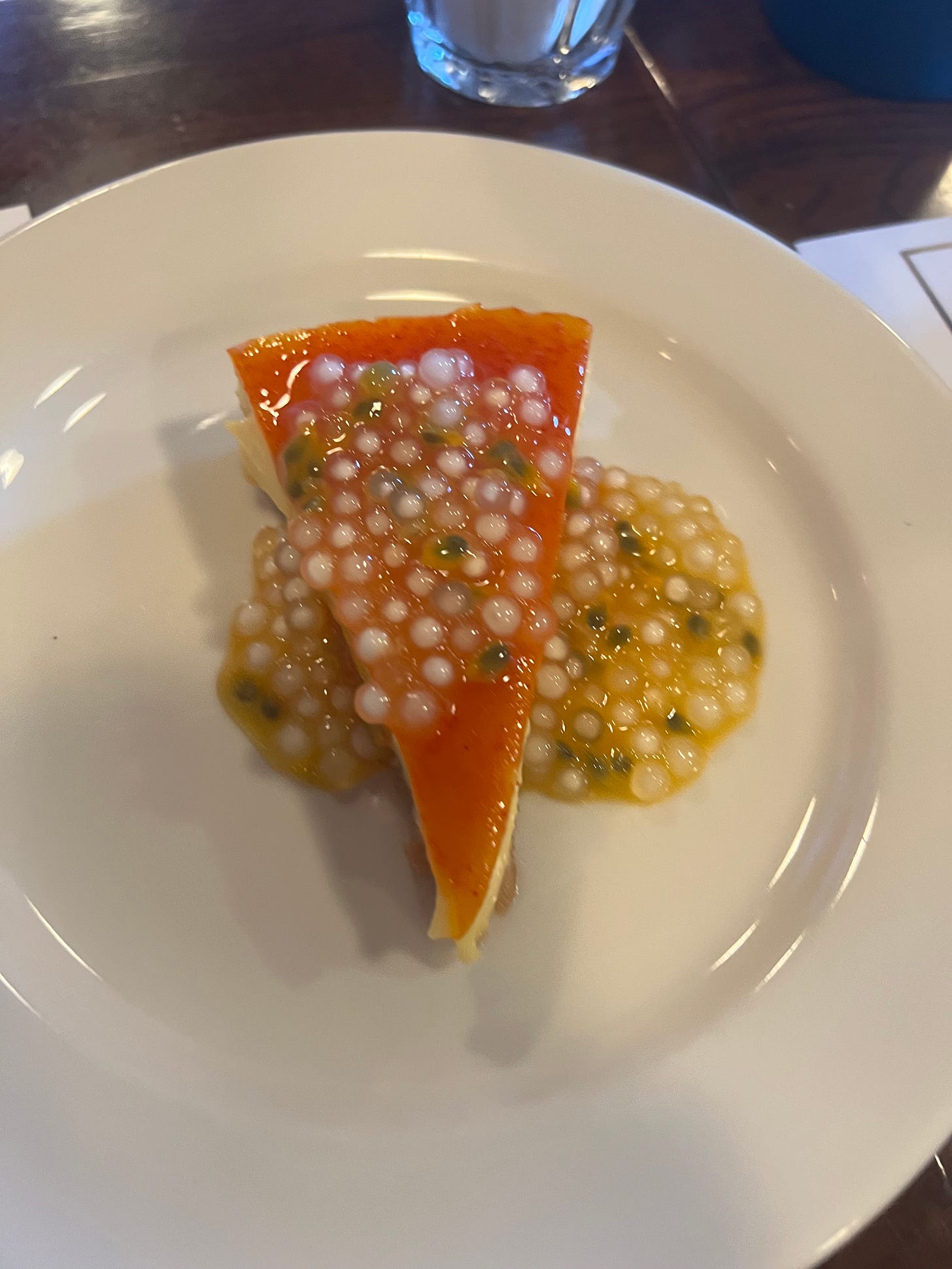
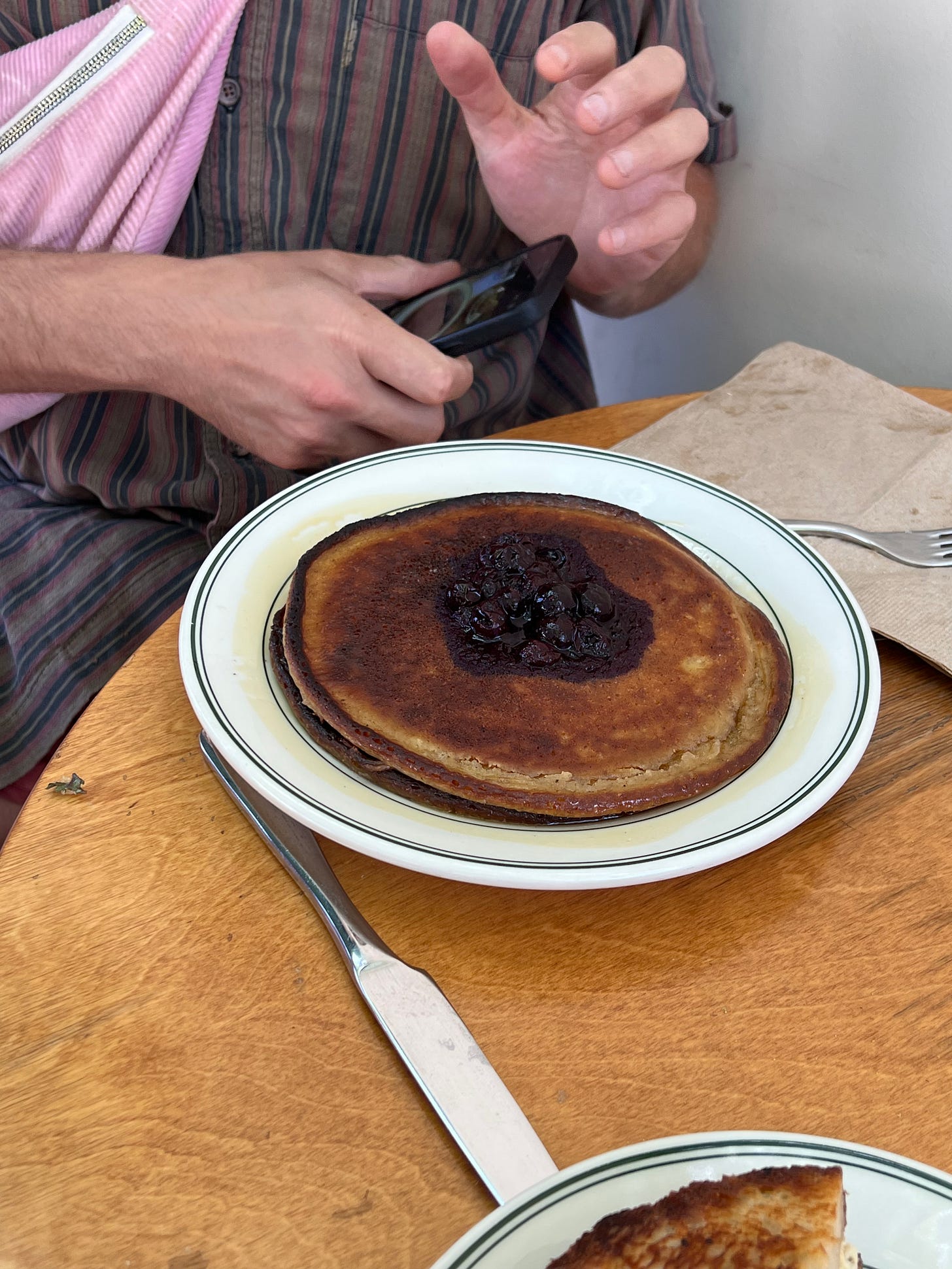
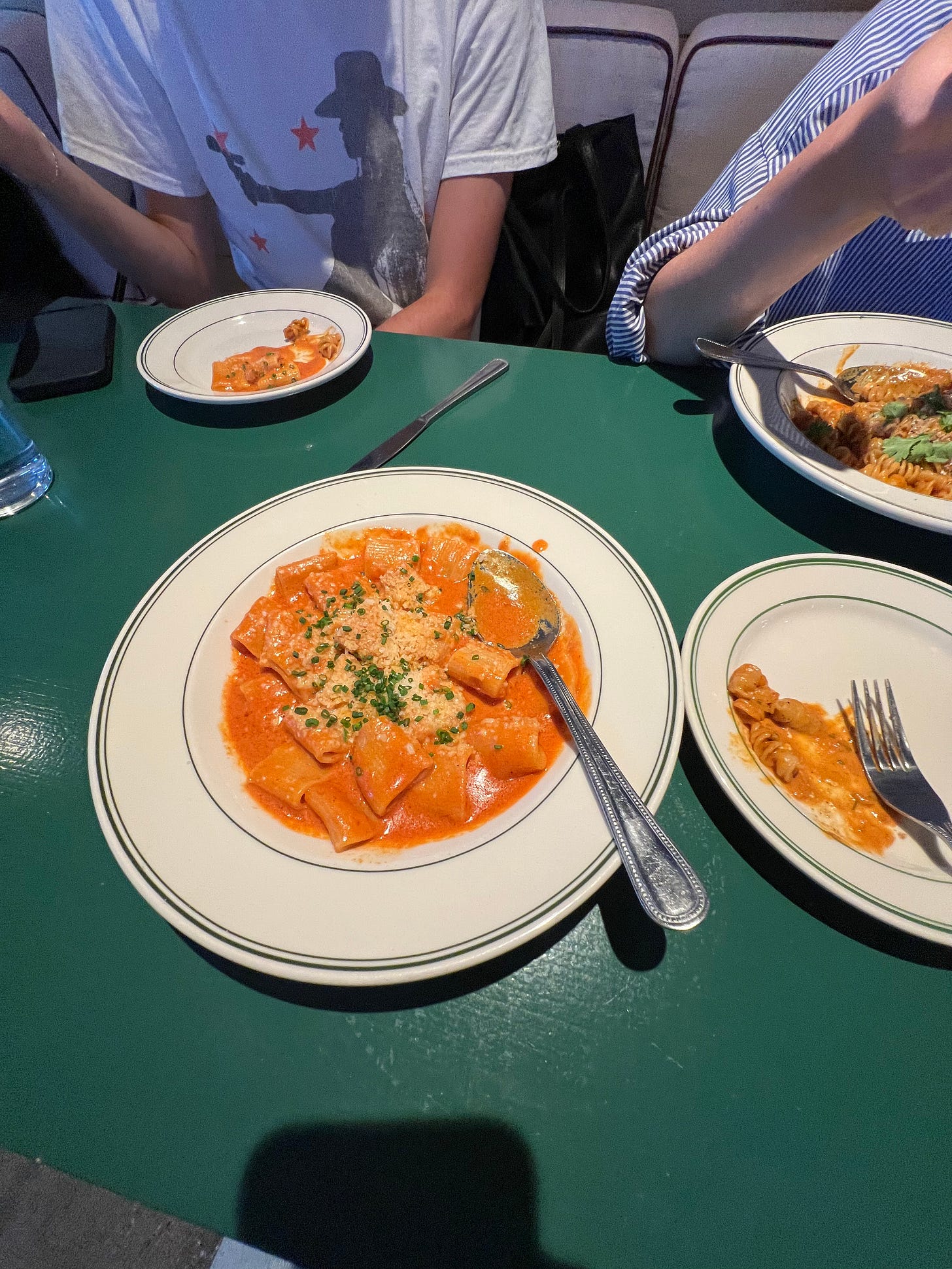
BUSTING OUT THE ARISTOTLE QUOTES 🥇
bean and cheese burritos ❤️❤️❤️❤️